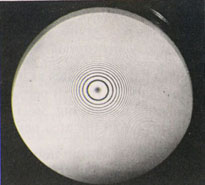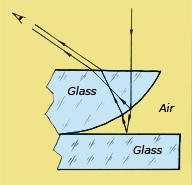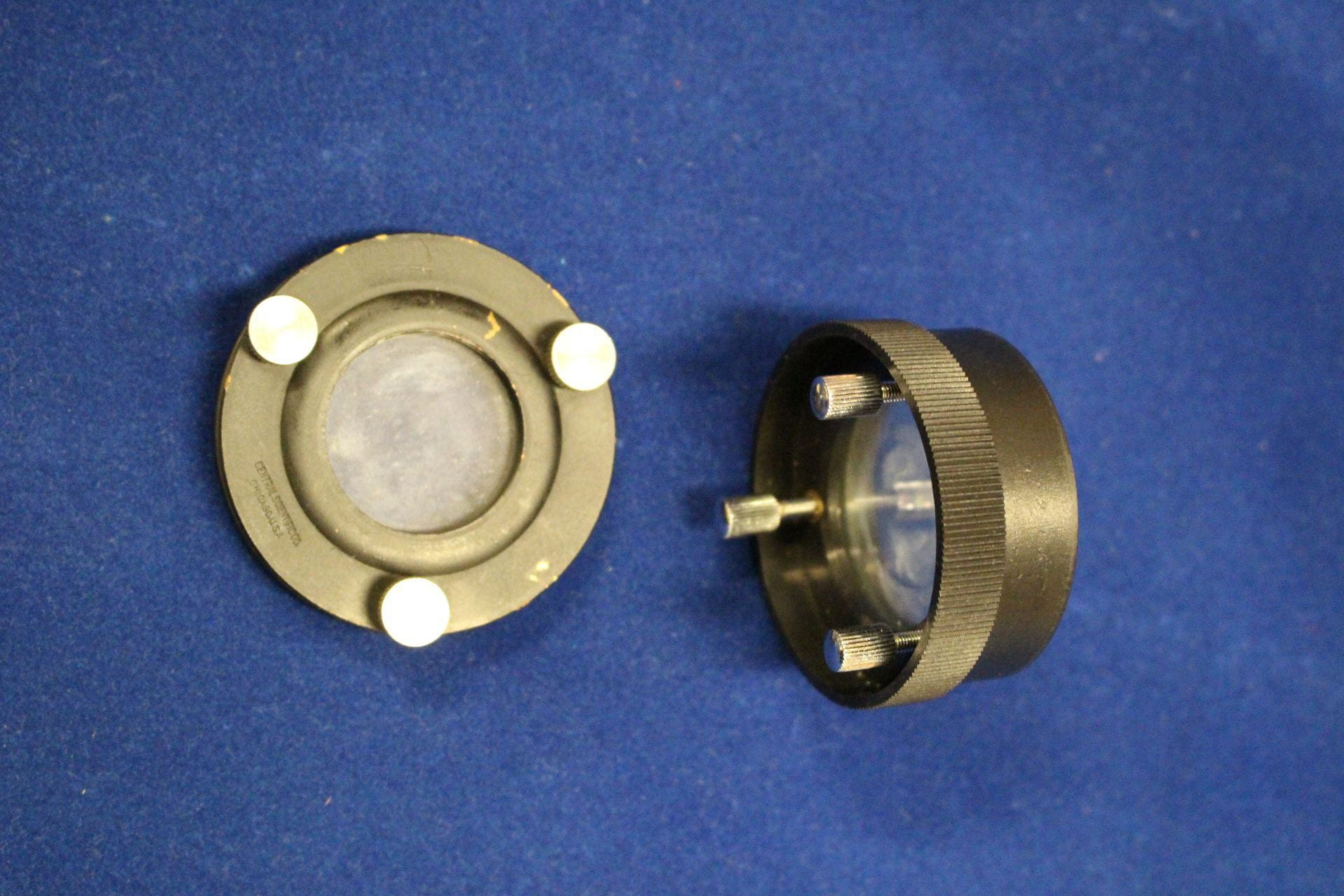Materials:
Newton’s Ring apparatus: Consists of glass plates that are 40 mm in diameter and visible 34 mm in a frame, adjusted with three screws.
Demo:
The demo apparatus will be passed between the students. They will see a series of concentric light and dark rings centered at the point of contact between the spherical surface of a lens and the surface of flat glass. The three screws can compress the frame and squeeze the two pieces of glass thereby changing the observed patterns. The patterns are best viewed in reflected, monochromatic light. In daylight students will see rings of rainbow colors.
Explanation:
This phenomenon can be explained through thin film interference. The glass pieces in the apparatus are pressed together, with one convex glass piece and the other flat, as shown in Figure 2. There exists a thin film of air between the two glass pieces, which has a thickness of zero where the two glass pieces touch, but then increase the further away from the point of contact it is.
The light that hits the apparatus from above is known as the incident light, and it gets directed down to the surface of the convex glass piece, and then down again to the top of the flat glass piece, though at an angle this time. The angle at which the light gets reflected depends on the refractive indices of the mediums involved. In the case of the Newton’s Rings apparatus, the refractive index of air is generally stated as n = 1, and the refractive index of glass is estimated to be around n = 1.5. If the refractive index of the medium that the light passes through is less than the refractive index of the medium that the light hits, then a phase change exists. As such, the light reflected from the first glass surface has a phase change, and the light reflected from the second glass surface ends up being reflected at the same angle as the first. The reflected lights then interfere with each other, thus creating the observed phenomenon. The thickness of the bands decreases the further away from the contact point they are since the order of the wavelengths increases.
Note: The rings produced by this apparatus are very small (~ 3-4 mm), therefore this demo is not useful for large classes. It is good in labs, especially when a microscope with monochromatic light is available to students.


